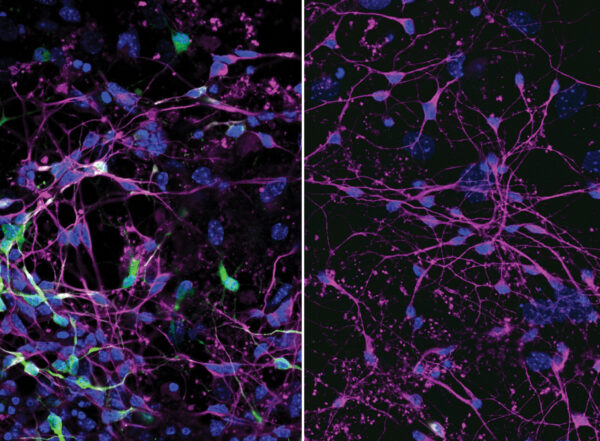Next-gen Alzheimer’s drugs extend independent living by months
New analysis recasts benefits of treatment in relation to day-to-day impacts on patients’ lives
 Getty Images
Getty ImagesAn Alzheimer’s patient with very mild symptoms who undergoes treatment with one of the new, next-generation therapies could expect to gain eight or 10 months living independently, according to a study by researchers at WashU Medicine. The new analysis interprets the benefits of the drugs in a way that is meaningful to patients and families, to help them make informed decisions about treatment.
In the past two years, the Food and Drug Administration has approved two novel Alzheimer’s therapies, based on data from clinical trials showing that both drugs slowed the progression of the disease. But while the approvals of lecanemab and donanemab, both antibody therapies that clear plaque-causing amyloid proteins from the brain, were greeted with enthusiasm by some Alzheimer’s researchers, the response of patients has been muted. According to physicians who care for people with Alzheimer’s, many patients found it difficult to understand what the clinical trials results — presented as “percent decrease in the rate of cognitive decline” — meant for their own lives.
Researchers at Washington University School of Medicine in St. Louis have devised a way to communicate the effects of taking the new Alzheimer’s medications in language that is accessible and understandable to patients and their families. Using data on the natural history of the disease and the magnitude of the drugs’ effects as measured in clinical trials, the researchers calculated how many months of independent living an Alzheimer’s patient could expect to gain by undergoing treatment. The benefits depended on the drug and the severity of the patient’s symptoms at the time treatment began. As a representative example, a typical patient who started treatment with very mild symptoms could expect to live independently for an additional 10 months if treated with lecanemab, or eight months with donanemab.
The study, published Feb. 13 in Alzheimer’s & Dementia: Translational Research & Clinical Interventions, provides crucial information that can help patients and caregivers weigh the benefits against the costs and risks of treatment.
“What we were trying to do was figure out how to give people a piece of information that would be meaningful to them and help them make decisions about their care,” said senior author Sarah Hartz, MD, PhD, a professor of psychiatry at WashU Medicine. “What people want to know is how long they will be able to live independently, not something abstract like the percent change in decline.”
Alzheimer’s patients and their families are faced with the tough question of whether to undergo a treatment that will not make them better. It won’t even stop them from getting worse. At best, treatment with lecanemab or donanemab could slow the inevitable cognitive decline that characterizes Alzheimer’s. Add to this the facts that treatment is expensive, requires biweekly or monthly infusions, and carries risks such as brain bleeds and brain swelling that are usually mild and go away on their own but can, in rare cases, be life-threatening.
But just because the benefits are limited doesn’t mean they are not valuable to patients and their families.
“My patients want to know, ‘How long can I drive? How long will I be able to take care of my own personal hygiene? How much time would this treatment give me?’” said co-author Suzanne Schindler, MD, PhD, an associate professor of neurology and a WashU Medicine physician who treats people with Alzheimer’s disease. “The question of whether or not these drugs would be helpful for any particular person is complicated and has to do with not only medical factors, but the patient’s priorities, preferences and risk tolerance.”
Living independently with Alzheimer’s disease
There are two critical inflection points on the continuum between independence and dependency. The first is the point where a person can no longer live independently because of an impaired ability to manage everyday tasks such as preparing meals, driving, paying bills and remembering appointments. The second point comes when a person can no longer care for his or her own body, and requires assistance with bathing, dressing and toileting.
To calculate the effects of treatment, Hartz and her colleagues first estimated when people could expect to lose each of the two kinds of independence if left untreated. They analyzed the experiences of 282 people who participated in research studies at WashU Medicine’s Charles F. and Joanne Knight Alzheimer Disease Research Center. All participants met the criteria for treatment with the two new drugs, but hadn’t received them previously. The researchers also calculated how quickly symptoms progressed without treatment.
Using these data on independence and progression, combined with the reported effects of the two drugs, the researchers calculated the amount of time a person at each stage of the disease could be expected to live or care for themselves independently without treatment, and how this progression would compare to those who received treatment.
A typical person with very mild symptoms could expect to live independently for another 29 months without treatment, 39 months with lecanemab, and 37 months with donanemab.
Most people with mild symptoms — as opposed to very mild symptoms — were already unable to live independently at baseline, so for them the more relevant measure was how much longer they would be able to care for themselves. The researchers calculated that a typical person at this stage of the disease could expect to manage self-care independently for an additional 26 months if treated with lecanemab, 19 months with donanemab.
This way of understanding the effects of the drugs could help patients and their families make decisions about their care, the authors said.
“The purpose of this study is not to advocate for or against these medications,” Hartz said. “The purpose of the paper is to put the impact of these medications into context in ways that can help people make the decisions that are best for themselves and their family members.”






